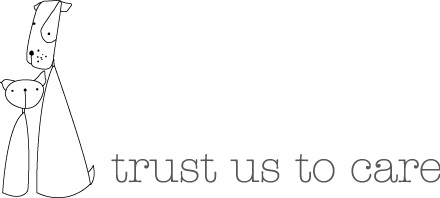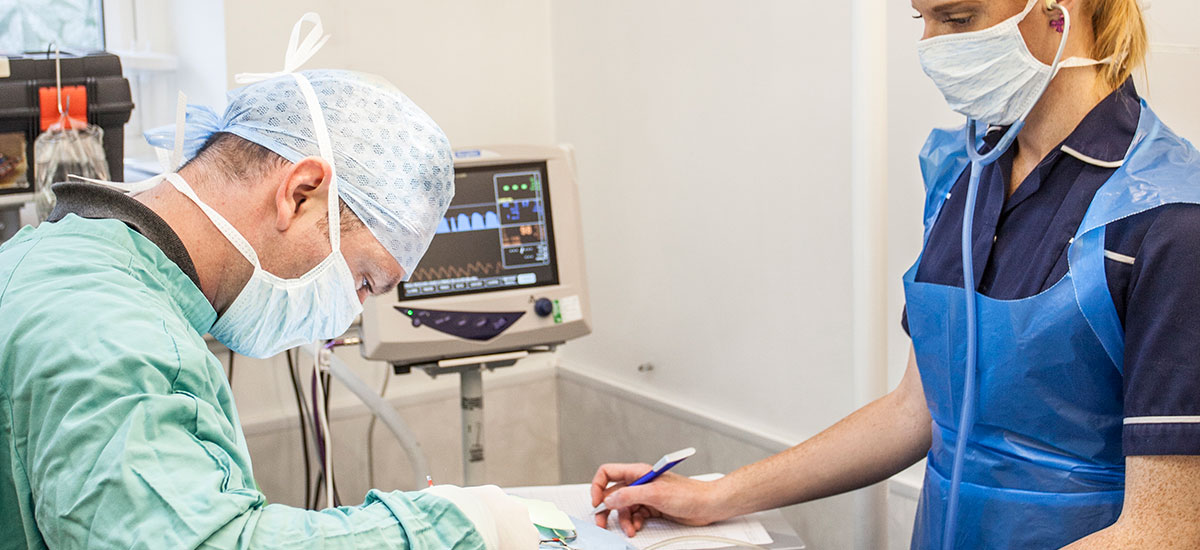Cat Spay
- We recommend that all female kittens are spayed before their first season at 4-5 months old, provided that they are at least 2 kg bodyweight
- Having a female cat spayed is a major surgical procedure
- It can be a worrying time for owners so we have detailed below how we will care for your pet during her stay with us. We not only ensure that she is happy, calm, relaxed and well cared for during her stay, but we also ensure the very best of professional care and expertise from admission though to anaesthesia, surgery, recovery, discharge and postoperatively
Admission
- An appointment with one of our nurses will be made to admit your pet
- During that appointment, we will check if there have been any recent problems and that all pre-op instructions have been understood and followed correctly
- Following admission, a veterinary surgeon will clinically examine your pet
- Provided the veterinary examination is unremarkable, “pre-med” injections of a sedative, an anti-inflammatory and an analgesic will be administered
- An intra-venous catheter is placed to allow us direct access for medicines and fluids as needed, before, during and after surgery
- Your pet will then be housed in one of our kennel rooms. We have Feliway plug-in diffusers in each kennel room to release pheromones to help keep patients relaxed
- Using separate kennel areas, and providing appropriate bedding and hides we will try to minimise stress as much as possible
Anaesthesia and Surgery
- We induce general anaesthesia in our prep area using very modern injectable anaesthetics and maintain anaesthesia using very modern gaseous anaesthetics
- During “prep” and surgery itself, your pet will be closely monitored by a Registered Veterinary Nurse, or another suitably qualified person, under the direction of one of our Veterinary Surgeons
- Monitoring involves both personal observation and very sensitive equipment that measures oxygen saturation of the blood stream, exhaled carbon dioxide the heart rate / rhythm and body temperature
- We use heated air blankets (Bair Huggers) to maintain the patients body temperature during anaesthesia and surgery – other warming devices can risk harming anaesthetized patients
- Once the hair is clipped and the area is “scrubbed up”, we transfer the patient to one of our dedicated operating theatres. Our theatres have very high standards of cleanliness and sterility
- Surgical masks and hats are worn by all staff in the theatre. Additionally, the surgeon wears a sterile gown and gloves
Recovery
- Following the surgical removal of the two ovaries and uterus, your pet recovers from anaesthesia under very close supervision and with continued monitoring. This can be the most critical part of any procedure that involves an anaesthetic
- Our staff will telephone you as soon as your pet is awake
After surgery
- Later in the day, you will be scheduled another appointment with one of our nurses. They will discuss post-operative care and provide protection collars to help prevent your pet licking the surgical site (there is a small additional charge for the collar)
- Your pet will go home with clear written instructions, pain relief medication and a bland, highly digestable meal for that evening (there is a small additional charge for the pain relief and meal)
- Our staff will telephone you the following day to ensure everything is OK at home
- 48 hours after surgery, we will ask you to attend the surgery so that we can recheck your pet and the surgical wounds. There is no further charge for this recheck
- 10 days after the operation, we will ask you to attend again for another check and suture removal. There is no further charge for this recheck
Cat Spay - starting from £144.51
(Prices correct as of 12/03/24)
Please note that our prices are specific to the level and standard of care that we provide at Valley Vets. They should not be used as a like-for-like comparison with other vets as our procedures may not be the same. Not all vets are able to provide the same level of care.
* If your cat may be pregnant, or in season, or you would prefer a midline spay rather than the normal flank spay please contact us for advice and charges






